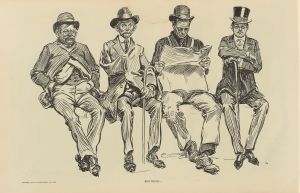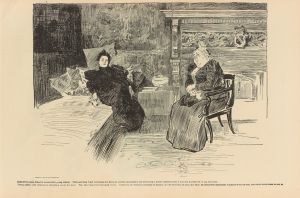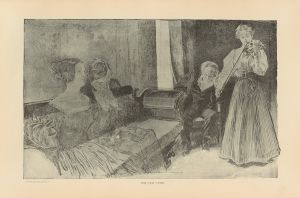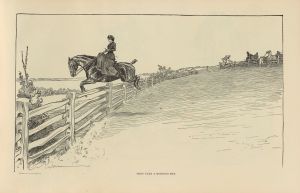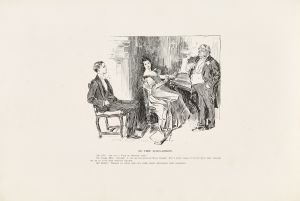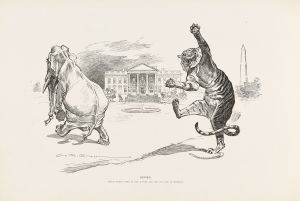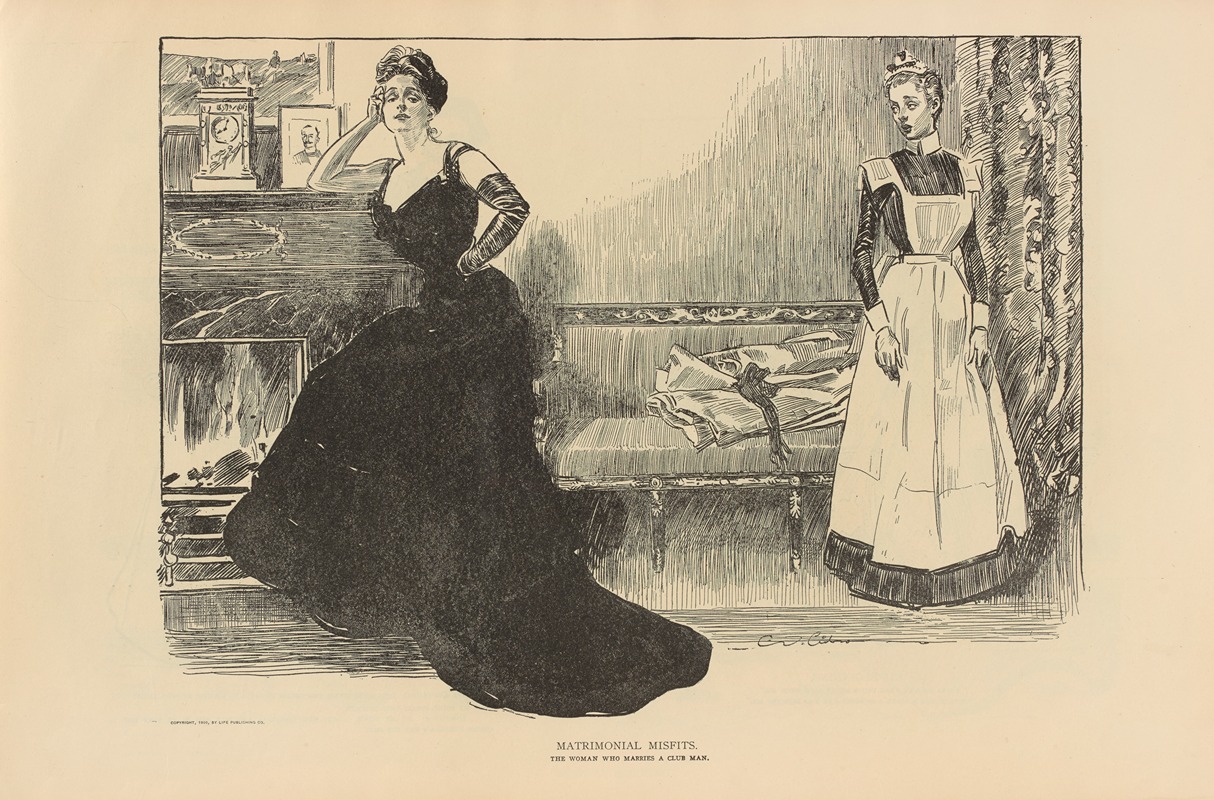
Matrimonial misfits. The woman who marries a club man
A hand-painted replica of Charles Dana Gibson’s masterpiece Matrimonial misfits. The woman who marries a club man, meticulously crafted by professional artists to capture the true essence of the original. Each piece is created with museum-quality canvas and rare mineral pigments, carefully painted by experienced artists with delicate brushstrokes and rich, layered colors to perfectly recreate the texture of the original artwork. Unlike machine-printed reproductions, this hand-painted version brings the painting to life, infused with the artist’s emotions and skill in every stroke. Whether for personal collection or home decoration, it instantly elevates the artistic atmosphere of any space.
Charles Dana Gibson was an influential American illustrator, best known for his creation of the "Gibson Girl," a representation of the idealized American woman at the turn of the 20th century. His illustrations captured the social dynamics and cultural norms of his time, often with a humorous or satirical edge. One of his notable works is "Matrimonial Misfits. The Woman Who Marries a Club Man," which exemplifies his keen observation of societal trends and relationships.
"Matrimonial Misfits" is part of Gibson's broader commentary on marriage and gender roles during the late 19th and early 20th centuries. The illustration depicts a woman who has married a "club man," a term used to describe men who spent a significant amount of time in gentlemen's clubs, which were social spaces for men to gather, network, and engage in leisure activities away from their homes and families. These clubs were popular among the upper and middle classes and were often seen as a symbol of social status.
In this particular illustration, Gibson humorously critiques the potential pitfalls of such a marriage. The "club man" is often portrayed as being more committed to his social life and leisure activities than to his domestic responsibilities. This dynamic could lead to a sense of neglect or dissatisfaction for the wife, who might find herself competing with her husband's social interests for his attention and affection.
Gibson's work often highlighted the tensions between traditional marital expectations and the evolving social landscape of the time. The late 19th and early 20th centuries were periods of significant change, with women increasingly advocating for more rights and independence. The "Gibson Girl" itself was a symbol of this new woman—confident, independent, and socially active. However, the reality of marriage often lagged behind these ideals, leading to the "matrimonial misfits" that Gibson depicted.
The humor in Gibson's illustration comes from the exaggerated expressions and situations he portrayed. His ability to capture the nuances of human relationships with wit and charm made his work widely popular and influential. "Matrimonial Misfits" would have resonated with contemporary audiences who recognized the social commentary embedded in the humor.
Gibson's illustrations were published in popular magazines of the time, such as Life and Scribner's, reaching a wide audience and contributing to public discourse on social issues. His work remains a valuable historical resource for understanding the cultural attitudes and social dynamics of his era.
Overall, "Matrimonial Misfits. The Woman Who Marries a Club Man" is a reflection of Charles Dana Gibson's talent for capturing the complexities of human relationships and societal norms with humor and insight. Through his art, Gibson provided a lens into the changing roles and expectations of men and women during a pivotal time in American history.





